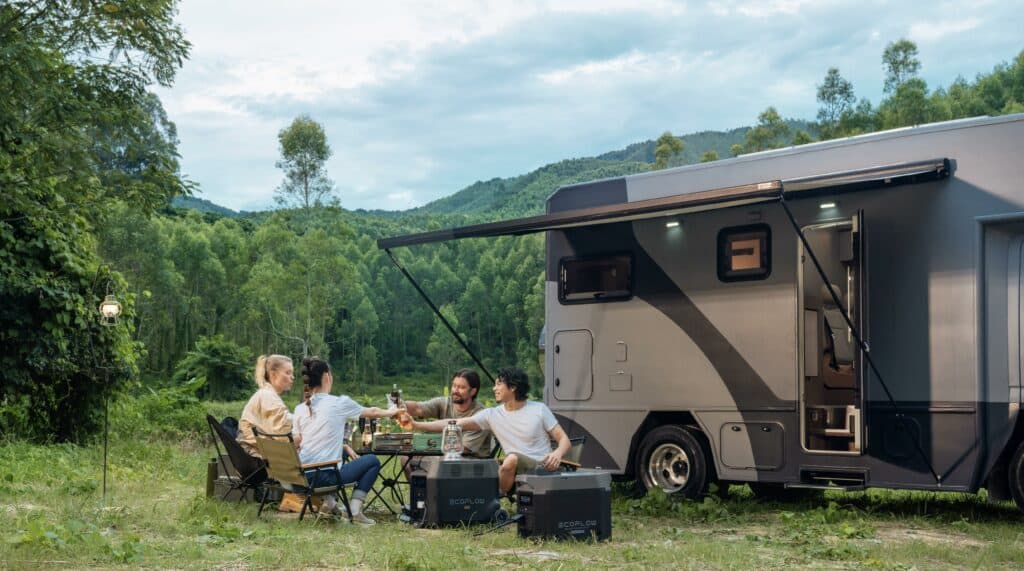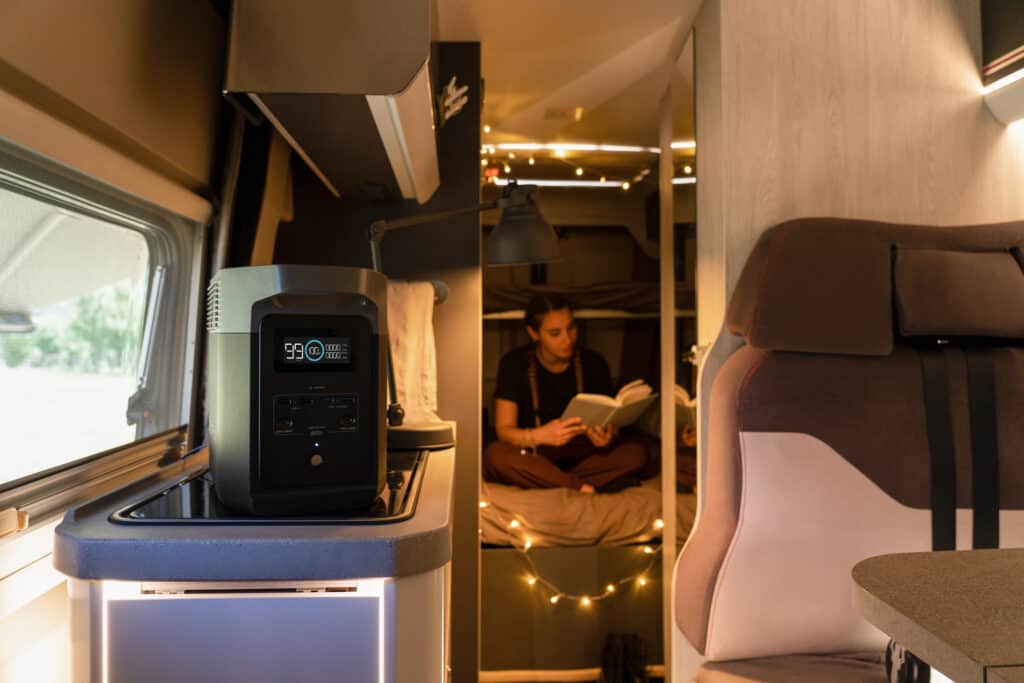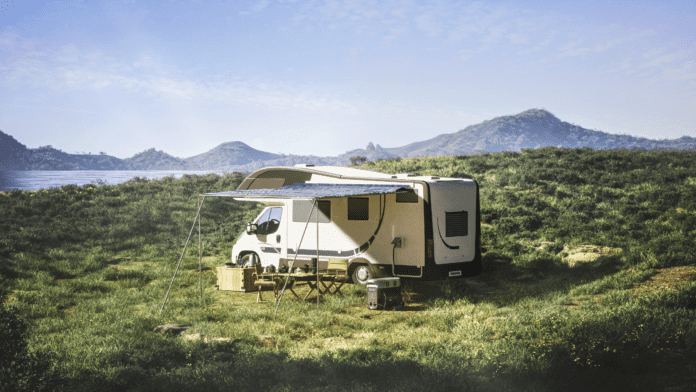Table of Contents
The cost of living in the United States varies significantly depending on where you live and your lifestyle choices. One popular option for those looking to save money on housing expenses is full-time RV living. But is it cheaper to live in an RV than a house in the US? In this blog post, we’ll explore this question and discuss the average monthly costs of both living arrangements, the pros and cons of full-time RV living, and the safety considerations to keep in mind.
The short answer is that it can be cheaper to live in an RV than a house in the US, but it depends on several factors. For example, the cost of living in a house varies depending on the city, state, and neighborhood, as well as the size and age of the home. Meanwhile, the cost of RV living varies depending on the size and age of the RV, as well as the campground or RV park where you choose to stay.

What is the Average Monthly Cost of the Homeowner in the US?
The cost of home ownership in the United States varies significantly depending on several factors, including location, property size, age of the home, and more. However, in general, the average monthly cost of home ownership in the US is around $1,200 to $1,500.
This monthly cost includes several expenses that homeowners need to consider, such as mortgage payments, property taxes, homeowner’s insurance, and maintenance costs. Mortgage payments are the largest monthly expense for most homeowners, and the average monthly mortgage payment in the US is around $1,500.
Property taxes are another significant expense, with the average property tax rate in the US ranging from 0.28% to 2.31% of a home’s assessed value, depending on the state. Homeowner’s insurance is also essential, with an average monthly premium of around $100 to $200, depending on the level of coverage.
In addition to these fixed expenses, homeowners also need to budget for maintenance and repair costs. The average annual cost of maintenance and repairs is around 1% to 4% of a home’s value, which works out to around $200 to $800 per month for a home worth $200,000.
The cost of home ownership in the US can be a significant financial commitment. It’s essential to consider all the expenses associated with owning a home before deciding to purchase. However, with careful planning and budgeting, home ownership can be a wise long-term investment that provides both financial stability and personal satisfaction.
What Is the Average Monthly Cost of Full-Time RV Living in the US?
Full-time RV living has become a popular lifestyle choice for many people in the United States. Living in an RV full-time allows individuals to travel the country and experience a sense of freedom, but it also comes with its own unique set of expenses. The average monthly cost of full-time RV living in the US can vary widely depending on several factors, including the type of RV, location, lifestyle choices, and more.
One of the most significant expenses for full-time RV living is the cost of the RV itself. The price of an RV can range from $10,000 for a used travel trailer to over $500,000 for a new luxury motor-home. In addition to the initial purchase price, ongoing expenses include maintenance and repair costs, which can add up quickly.
Other expenses for full-time RV living include campsite fees, fuel costs, and insurance. The average cost for a campsite ranges from $10 to $50 per night, with many RV parks offering weekly and monthly rates. Fuel costs are also a significant expense, with the average RV getting around 10 miles per gallon. Finally, insurance for an RV can cost around $150 to $300 per month, depending on the type of coverage.
Lifestyle choices can also impact the monthly cost of full-time RV living. For example, eating out frequently or enjoying tourist activities can add to the monthly expenses. On the other hand, living a more minimalist lifestyle and cooking meals in the RV can help reduce expenses.
Overall, the average monthly cost of full-time RV living in the US ranges from $1,500 to $3,000, depending on the lifestyle and RV choices. While this lifestyle can be an excellent way to explore the country, it’s important to carefully consider all the expenses involved before committing to it.
What Are the Pros and Cons of Full-Time RV Living?
Full-time RV living is becoming an increasingly popular lifestyle choice for many people in the US. While it offers a sense of freedom and adventure, it also comes with its own unique set of pros and cons.
Pros:
- Mobility and Flexibility: Full-time RV living allows individuals to travel the country and explore new places at their leisure.
- Cost Savings: RV living can be more affordable than traditional homeownership, as it requires less space and utility usage.
- Simplified Living: Living in an RV requires downsizing and simplifying possessions, which can lead to a simpler and more minimalist lifestyle.
- Sense of Community: Full-time RV living provides opportunities to connect with other RVers and build a sense of community.
Cons:
- Limited Space: Living in an RV can be challenging due to limited space, especially for couples or families.
- Maintenance and Repair Costs: RVs require regular maintenance and repair costs that can add up over time.
- Isolation: Living in an RV can be isolating, especially for those who are not comfortable being alone or away from loved ones for extended periods.
- Lack of Stability: Full-time RV living is not for everyone, and the lack of stability can be a disadvantage for those who need routine and consistency.
- Living in an RV full time during the winter can be challenging, as the colder temperatures, snow, and ice can make it difficult to stay warm and maintain the vehicle’s infrastructure
Full-time RV living can be a fulfilling and rewarding lifestyle for those who enjoy travel and adventure, but it is not without its challenges. It is important to carefully consider all the pros and cons before deciding to pursue this lifestyle.

List of Must-Haves for Full-Time RV Living
- Portable Power Station: A reliable portable power station is essential for full-time RV living, as it can power devices and appliances without needing to connect to shore power or run the vehicle’s engine. It can also serve as a backup power source in case of power outages or emergencies.
- Water Filter: A good water filter can ensure that the RV’s water supply is safe and clean for drinking, cooking, and bathing.
- Sewer Hose: A sturdy and durable sewer hose is necessary to properly dispose of waste water from the RV’s holding tanks.
- Leveling Blocks: Leveling blocks are used to stabilize the RV and ensure it is level when parked on uneven surfaces.
- Propane Tanks: Propane tanks are used to power the RV’s furnace, stove, and water heater, providing heat and hot water during cold weather.
- Solar Panels: Solar panels can be a great addition to a portable power station, providing a sustainable and environmentally-friendly source of power for the RV.
- First Aid Kit: A first aid kit is essential for any emergencies or injuries that may occur while living in an RV.
- Fire Extinguisher: A fire extinguisher is crucial for any potential fires that may occur inside or outside the RV.
- Tools and Spare Parts: It’s important to have a basic set of tools and spare parts, such as fuses, light bulbs, and nuts and bolts, to make repairs and perform maintenance on the RV.
- Portable Heater: A portable heater can be useful for heating small spaces in the RV during cold weather, when the furnace may not be sufficient.

Is that Safe to Live in the RV Full Time?
Living in an RV full-time can be safe if proper precautions are taken. RVs come with safety features such as smoke detectors, carbon monoxide detectors, and fire extinguishers. It is essential to ensure these safety features are in good working order and regularly maintained.
When choosing a campsite or parking location, it is important to research and selects a safe and secure area. RVers should also be aware of potential hazards, such as extreme weather conditions and wildlife.
It is also crucial to maintain the RV properly to ensure it is in good condition and safe to live in. Regular maintenance, including checking for leaks and ensuring the electrical and plumbing systems are in good working order, is essential. Living in an RV full-time can be safe with proper planning, maintenance, and caution.
In conclusion, the question of whether it is cheaper to live in an RV than a house in the US is not straightforward, as it depends on various factors such as location, lifestyle, and personal preferences. While RV living can be more affordable than traditional home ownership due to lower space and utility usage, owning an RV also comes with its own set of expenses, such as maintenance and repair costs, campsite fees, fuel costs, and insurance. Home ownership also involves a range of expenses such as mortgage payments, property taxes, and maintenance and repair costs. Ultimately, the decision to choose between RV living and home ownership should be based on individual circumstances and preferences. It is essential to consider all costs and benefits of both options before making a decision.
FAQs
Living in an RV can be cheaper than traditional home ownership because RVs require less space and utility usage, resulting in lower costs for heating, cooling, and maintenance. Additionally, RV living encourages a simpler and more minimalist lifestyle that can lead to fewer expenses related to possessions.
Yes, owning an RV comes with its own set of expenses, such as maintenance and repair costs, campsite fees, fuel costs, and insurance. These costs can add up over time and may not be significantly lower than traditional home ownership expenses.
Living in an RV can be challenging due to limited space, especially for couples or families. RVs also require regular maintenance, and the lack of stability and routine can be a disadvantage for those who need consistency.
RV living can be an excellent option for retirees on a fixed income as it can be more affordable than traditional home ownership. RV living also allows retirees to travel and explore new places, providing a sense of adventure and freedom.
Factors to consider include personal preferences, location, lifestyle, and budget. It is important to weigh the costs and benefits of both options carefully and consider all expenses associated with each.
